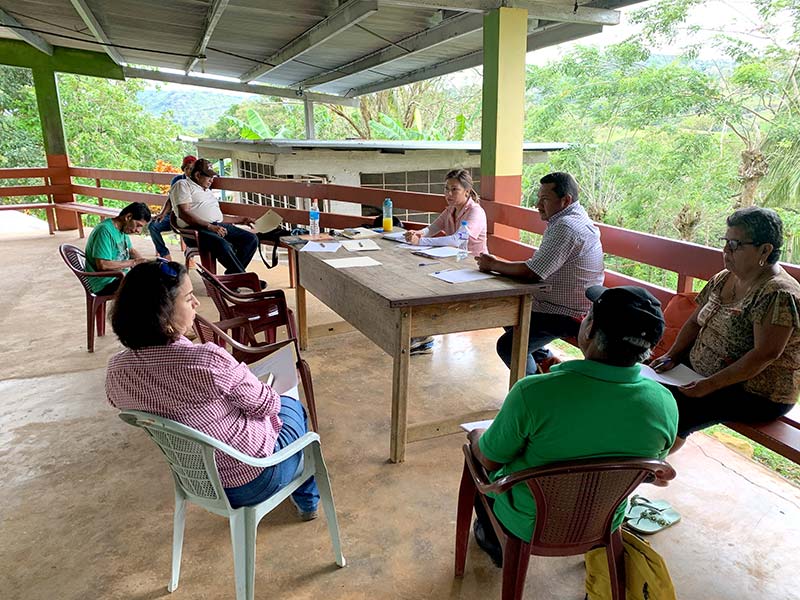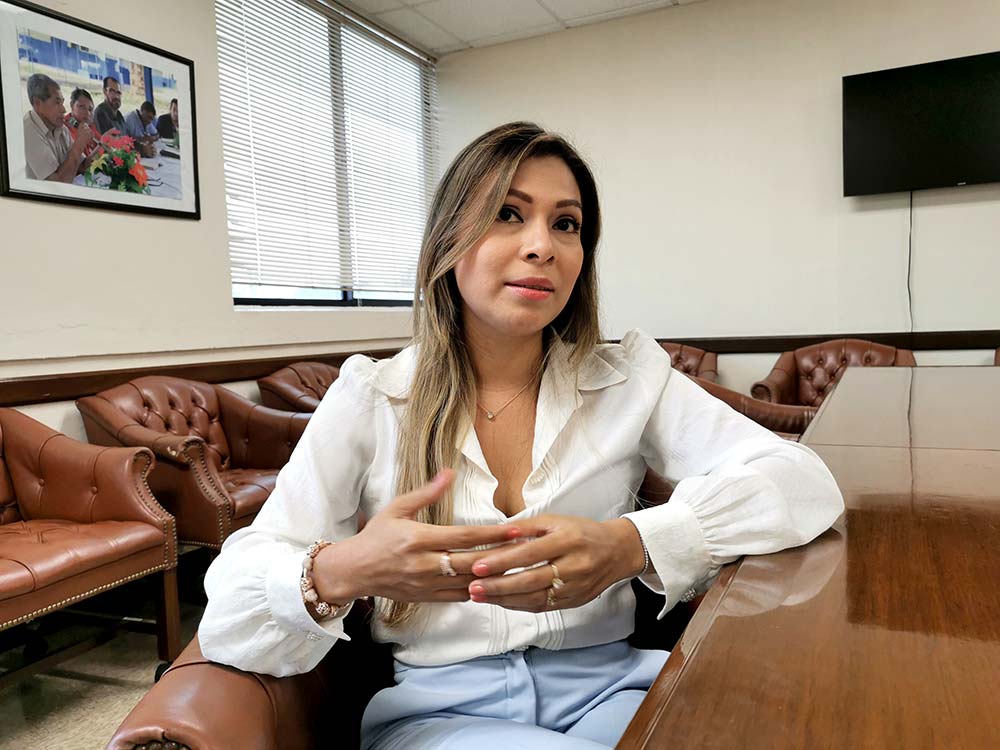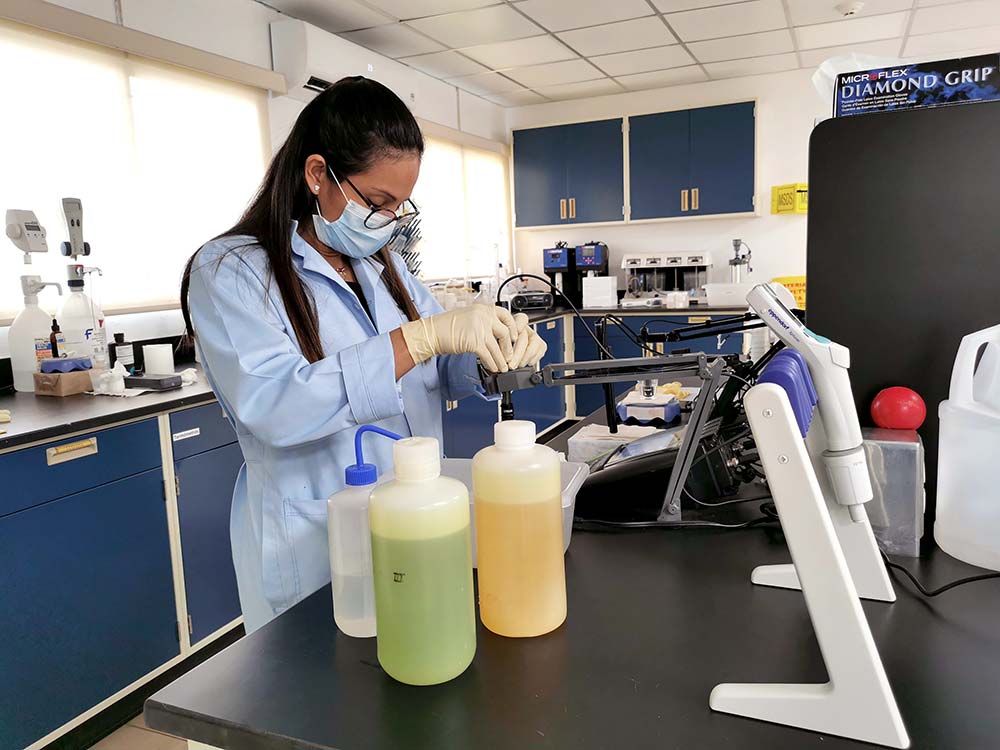Professions and vocations
The Panama Canal is home to professions that support the mission of preserving its watershed. Meteorology, sociology and chemistry provide essential data for the protection of the environment surrounding the interoceanic waterway.
Meteorology
To monitor water resources and support their proper use and protection, the Panama Canal has a network of 58 hydrometeorological stations, a radar, a satellite imaging service and alliances with regional meteorological services, which are the tools used by a group of meteorologists to transform data into key information for decision-making.
Gloria Arrocha, a meteorologist, is one of the members of this team. Her work makes it easier for specialists from other disciplines to take the best actions at sensitive times, such as during the flood control season or when extreme phenomena such as storms or droughts occur.
Meteorology provides surveillance of prevailing weather conditions, collects and analyzes data, monitors the behavior of the oceans, and has meteorological models.
“With these elements, increasingly accurate forecasts are made about the behavior of the climate, whether in the short or medium term,” he said.
All this quantified information makes it possible to better manage water, either by reserving it when dry periods are forecast, or by increasing its use when above-normal rainfall is expected.
Therefore, it is necessary to lower the level of the reservoirs to avoid an excess of water that could endanger the safety of people living in sensitive areas or the canal infrastructure.

Sociology
The Panama Canal is responsible for managing and conserving the water resources in the Canal Watershed, based on an integrated management and sustainable development strategy. To achieve this, it is necessary to count on the participation of the inhabitants of this territory.
The Canal Watershed is an area of approximately 3,435 square kilometers, and although about 40% corresponds to protected lands, it comprises seven districts and 44 townships in which there are about 432 populated places.
To address this reality, since the Canal reverted to Panamanian hands, interdisciplinary working groups were formed with the mission of creating and implementing socio-environmental programs that have shaped a management strategy for the watershed, the results of which are evident.
Gloria Trejos, a sociologist by profession, works in the interaction with the different actors that affect this territory, in order to implement the strategies that have been planned and integrate them into the effort for environmental conservation and good management of the Watershed.

Trejos explains that a participatory process has been implemented in the territory, which has had an impact from the grassroots of these communities and that, far from being static, it is under constant construction, as it is constantly adapting to meet the demands of the territorial dynamics.
“The social dynamics are very changeable,” assured the specialist, who considered that in all this effort, the process of participatory platforms that is being executed in the area stands out, a unique experience in the country. The communities have organized themselves into consultative councils, a participatory body created to improve capacities for the management and environmental governance of the Watershed’s water resources.
Chemistry
Proper water management requires close monitoring not only of its quantity, but also of its quality. The Panama Canal makes a special effort, because in addition to being vital for operations, the water resource stored in the lake system guarantees the water supply for more than 50% of the population residing in the provinces of Panama, West Panama and Colon.
As part of this task, the Canal operates three water treatment plants, one in each province. The quality of the stored water is strictly monitored and, after being processed, it will reach households through the National Water and Sewerage Institute (IDAAN), which is in charge of distributing it to the population.
Noris Matteus is a chemist at the Water Quality laboratory of the Mendoza water treatment plant in Panama Oeste. She is one of the people in charge of ensuring compliance with national regulations on the processing of drinking water.

Every day, she collects samples, both of the raw water that arrives at the water treatment plant from the reservoirs and of the water that, once processed, is ready to be delivered to IDAAN. These samples are subjected to a series of physicochemical and microbiological tests, the results of which help determine the quantities of chemicals used in the purification process.
The process is applied daily in all water treatment plants and seeks to deliver water of the highest quality for human consumption, but it also represents an additional line of defense in terms of monitoring the conditions of the reservoir. If any anomaly is detected in the composition of the raw water arriving at the plants, protocols will be activated immediately to investigate the possible cause and take appropriate action.
The joint effort between the Panama Canal and its collaborators promotes environmental conservation, as well as efficiency and innovation in its operations to remain competitive. This mission is possible thanks to the alliances established with the residents of the communities and the rest of the stakeholders, whose participation allows us to make an integral effort for the protection of the water resource.